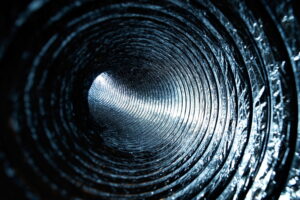The ductwork inside the walls and in the attic of your home is one of the more difficult parts of the home to take care of. It’s tricky for you to access, and it’s also hard for you to tell when it’s damaged or decaying. The best way to determine if you need to schedule professional duct services in Hart County to repair your ducts is to schedule professional duct testing. But that leads to the question of how you know you need duct testing in the first place.
Even if you can’t see most of the ducts in your house, there are signs to watch for that will warn you the ducts have breaches, holes, or gapping. We’ll go over several of the ways you can tell that it’s time to have the ducts tested so you’ll know what repairs they need.
Uneven heating and cooling
Rooms in the house have noticeable temperature variations, with some being too hot or too cold compared to others.
A rise in energy bills
A sudden or gradual increase in your energy bills without a corresponding change in using the HVAC system could indicate that the HVAC system is working harder than necessary, possibly due to leaky ducts.
Too much dust in the house
If you’re noticing much more dust accumulating in your house, even after regular cleaning, it might mean that there are leaks in the ductwork that are allowing dust and debris to enter.
Poor airflow from the vents
Weak or uneven airflow from the vents may suggest that there are blockages, leaks, or other issues within the ventilation system.
Frequent HVAC repairs
Problems with ductwork will place extra strain on the HVAC system, leading to more repair problems cropping up. Extra dust and dirt infiltration will also cause damage that can require repairs.
Noticeable leaks or damage
There are some parts of the ductwork you can see, and if you notice visible damage such as holes, disconnected sections, or deteriorating insulation, it probably means the issues are extensive throughout the ductwork.
Mold or mildew growth
The presence of mold or mildew around the vents or on walls and ceilings could be a sign of moisture infiltration through duct leaks.
Strange odors
Unpleasant or musty odors wafting from the vents may indicate mold growth or the infiltration of outside contaminants through duct leaks.
Old or poorly installed ductwork
If your home has older ductwork or if the ductwork wasn’t installed properly (this is unfortunately common), there’s a higher chance of leaks and other problems that require testing and maybe repairs.
Visible condensation
Moisture or condensation on or around the ducts could indicate leaks, potentially leading to water damage and mold growth.
Excessive noise
Unusual sounds coming from the ducts, such as whistling, rattling, or banging, may suggest airflow issues or leaks that need attention.
Every five years
Finally, we recommend duct testing done on a regular schedule, even if there are no signs like the ones listed above. Ducts age and wear down, and it’s a good idea to catch any problems early with a preventive step like duct testing.
Contact JN Electrical Temperature Control, Inc and you’ll “Feel the Difference”!


